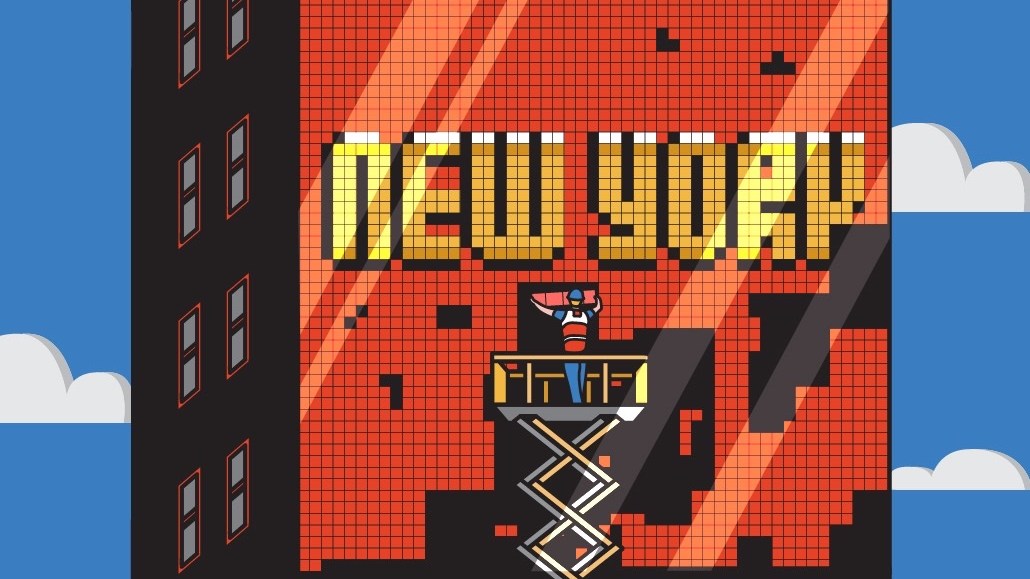Insights from CTV leaders at Dentsu, Horizon Media and more
Museum of Illusions takes OOH to a new dimension with 3D billboard

Today nearly everything that can be an ad is, thanks to the scores of retailers rolling out media networks and the surplus of streaming services adding ad-supported tiers. To stand out in this crowded landscape, Museum of Illusions is getting creative and testing 3D ads.
Back in the fall, the museum, which combines education and entertainment, opened a new flagship location in Las Vegas with a new 3D ad of an eye overlooking the Vegas Strip. The 3D ad concept is a first for the company, and it’s a push not only to stand out in Vegas, an especially crowded city, but also to keep up with a trend happening in the out-of-home advertising space.
Increasingly, out-of-home advertisers are rethinking the ad channel, testing 3D ads, the multi-million-dollar venue MSG Sphere and surreal out-of-home marketing stunts, dubbed faux out-of-home ads, to stand out in real life and, hopefully, go viral on social media. Agency executives believe it’s a trend that’ll continue into the new year. (Read about why agency execs believe the faux OOH trend is here to stay here.)
“Vegas is really a specific market, as you know,” said Marija Kobak, global brand manager for Museum of Illusions. “There are almost [an] unlimited number of things and events going on there. We wanted something unique to attract the customers.”
Besides the 3D eye overlooking the Vegas Strip, the Museum of Illusions’ Las Vegas opening strategy also leveraged posters, billboards, ads in airports and airport signage to make sure the brand had a big presence in the city. The company, which has more than 40 locations in 25 countries worldwide, also utilized OOH ads for its openings in Denver, Minneapolis, Atlanta and Charlotte, North Carolina, this year.
At this point, out-of-home accounts for just a small piece of the Museum of Illusions’ ad spend pie, overshadowed by digital ad spend. But it’s a growing piece and it’s becoming a key element of the company’s ad strategy, depending on what new museum location is opening and where it’s opening, per Kobak. Museum of Illusions declined to offer specifics about the brand’s ad spend.
“Out-of-home is definitely something that, in my opinion, is worth considering, especially when you want to increase brand awareness,” said Kobak.
From January to September of this year, Museum of Illusions spent $1,701,395 on media, according to Vivvix, including paid social data from Pathmatics. That figure is more than double than the $609,915 spent within that same time period in 2022.
Out-of-home spend has been clawing its way back from a pandemic-induced slump, when people weren’t outside their homes and, thus, advertisers weren’t spending ad dollars on OOH. In the U.S., OOH ad spend is expected to total $9.51 billion next year, and will exceed $10 billion in 2026, according to Insider Intelligence.
Technological advancements in OOH, including measurement capabilities, have taken the media channel from merely a brand awareness channel to more of a performance-oriented channel, according to Aileen Reyes, director of local media at independent media agency Ocean Media.
“This shift enhances OOH’s appeal with advertisers, especially those focused on ROI,” Reyes said in an email. She added that mobile advertising identifiers and location-based services have capabilities to track exposure to an OOH ad and then connect it to website visits, app downloads, foot traffic and even sales conversions. With that said, digital out-of-home has become a big draw for some advertisers, especially startups and direct response marketers.
OOH is also evolving in a way that allows the channel to intersect with social media, as audiences take actions like snapping photos of OOH billboards to share via social, thus expanding a billboard’s reach. For example, last year, startup snack and wellness brand BelliWelli started investing more in OOH advertising after a billboard went viral. The development affords brands the advantages of digital media, like increased massive reach, without its drawbacks, like having to surrender to digital algorithms.
“Whether it’s a billboard, a wheat-pasted poster or a huge digital installation like the Sphere in Las Vegas, out-of-home executions impose themselves on the real world like nothing else,” said Jose D’Alta, senior creative at global creative collective Forsman & Bodenfors NY.
More in Marketing

Creator marketing has the reach — CMOs want the rigor
The creator economy got big enough to be taken seriously.

Pitch deck: Why Google believes its latest AI Max product is a game changer for search campaigns
AI Max, which launched May and rolls out this summer, aims to provide advertisers with a “one-click feature suite” for search campaigns.

Retail media’s mid-2025 reality: Why advertisers are going all in on full-funnel
Retail media’s meteoric rise may finally be leveling off — and that’s forcing advertisers to take a harder look at what they’re getting for their money.








